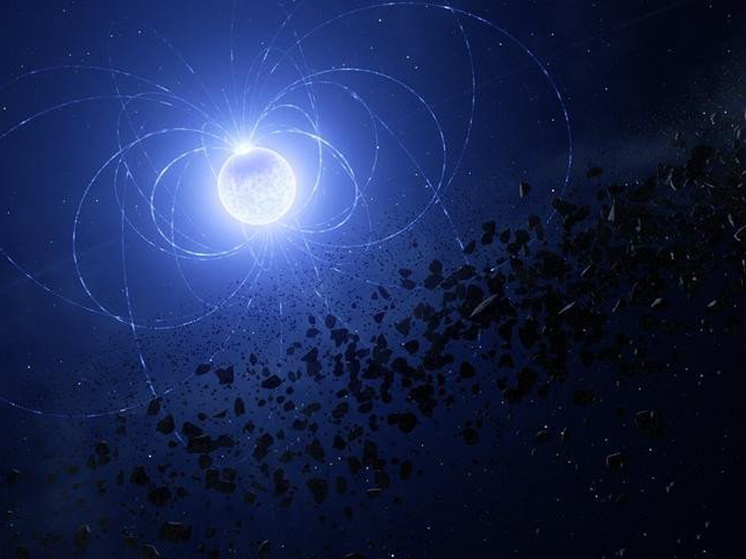Discovery may predict the ultimate fate of our solar system
A dead “cannibal” star was marked with a metal scar after consuming part of a planet. Astronomers have noticed an unusual sign that a dead star was feasting on a fragment of a planet orbiting it: a metallic scar on the surface of the star. The discovery sheds light on the dynamic nature of planetary systems even in the final stages of a star's life cycle — and, according to scientists, may predict the ultimate fate of our own solar system.
 Photo: ESO
Photo: ESO
Planets form from swirls of gas and dust called a protoplanetary disk that surround a newly formed star. But as the star ages and dies, the stellar object could devour the very planets and asteroids it helped create, CNN reports.
Astronomers observed the dead star, known as a white dwarf, located about 63 light-years from Earth, using the European Southern Observatory's Very Large Telescope in Chile. The observation revealed a metallic feature on the star's surface, which the researchers determined was associated with a change detected in the star's magnetic field. A new study detailing the observation appeared Monday in the Astrophysical Journal Letters.
“It is well known that some white dwarfs—slowly cooling embers of stars like our Sun—eat up chunks of their planetary systems. We have now discovered that the star's magnetic field plays a key role in this process leading to the formation of a scar on the white dwarf's surface,” study lead author Dr Stefano Bagnulo, an astronomer at Armagh Observatory and Planetarium in Northern Ireland, said in a statement.
The white dwarf, called WD 0816-310, is the remnant of an Earth-sized star that was once similar to our Sun, but larger. The stellar object acquired a noticeable dark mark on its surface, which turned out to be a concentration of metals.
“We demonstrated that these metals originated from a fragment of a planet the size of Vesta, which is about 500 kilometers (310 miles) across and is the second largest asteroid in the solar system,” says study co-author Jay Farihi, professor of astrophysics at University College London. .
While observing the star, astronomers noticed that the concentration of the metal they discovered changed as the star rotated. Instead of being distributed across the surface of the star, as astronomical theory predicted, the metal was concentrated in one area, study co-author John Landstreet, professor emeritus of physics and astronomy at Western University in Canada, said in a statement.
The power of metal detection also synchronized with changes observed in the star's magnetic field, leading the team to determine that the metal scar was located on one of the star's magnetic poles.
According to the findings, the star's magnetic field attracted metals to the star, resulting in a scar.
“This scar is a concentrated area of planetary material held in place by the same magnetic field that guided the falling fragments,” explains John Landstreet. “We’ve never seen anything like this before.”
Previous observations of white dwarfs have shown that the surfaces of dead stars are littered with metals. The metallic elements likely belong to planets or asteroids that came too close to the star — much like the comets that pass close to the Sun in our solar system.
But WD 0816-310 represents a completely different scenario, controlled magnetic field of the star. The process is similar to how auroras create bright displays near Earth's poles when energetic particles from the Sun collide with Earth's atmosphere.
The study authors said their observations reveal dynamic actions that could occur in other planetary systems, even after the death of the host star.
In about 5 billion years, our sun is expected to turn into a white dwarf. But first, the golden ball will turn into a red giant, swelling and expanding as layers of material are released. Red giants form when stars run out of hydrogen for nuclear fusion and begin to die. As a red giant, the Sun is likely to evaporate the inner solar system planets such as Mercury and Venus, according to NASA, although the fate of Earth remains unclear.



















































Свежие комментарии